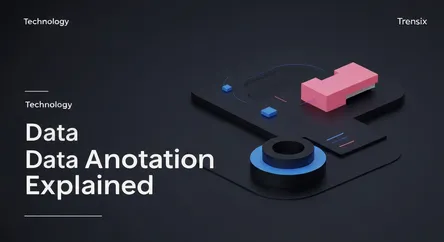Technology
Data Annotation Explained

Discover Data Annotation, the critical process of labeling data to train AI. Learn how it fuels machine learning and shapes the technology we use daily.
What is it?
Data annotation is the process of labeling or tagging raw data to make it understandable for machine learning models. Think of it as adding context. For an AI to learn to identify cars, humans must first go through thousands of images and draw boxes around every car. This process can involve image segmentation, text categorization, or audio transcription. This meticulously labeled dataset acts as the 'ground truth' or textbook from which an AI algorithm learns to recognize patterns and make accurate predictions on its own.
Why is it trending?
The explosive growth of artificial intelligence is directly fueling the demand for data annotation. Supervised machine learning, the most common form of AI, is entirely dependent on high-quality labeled data for training. As businesses across all sectors rush to build AI-powered applications—from autonomous vehicles to personalized recommendation engines—the need for vast, accurately annotated datasets has become a critical bottleneck. Quality annotation is the foundation of any reliable and effective AI system.
How does it affect people?
Data annotation is the invisible engine behind many technologies you use daily. It enables self-driving cars to distinguish pedestrians from streetlights, allows medical AI to detect tumors in X-rays, and helps your smart assistant understand commands. It also powers the content moderation systems on social media platforms. On a socio-economic level, it has created a massive global industry for human annotators and has driven innovation in specialized software tools, shaping both the future of technology and the future of work.